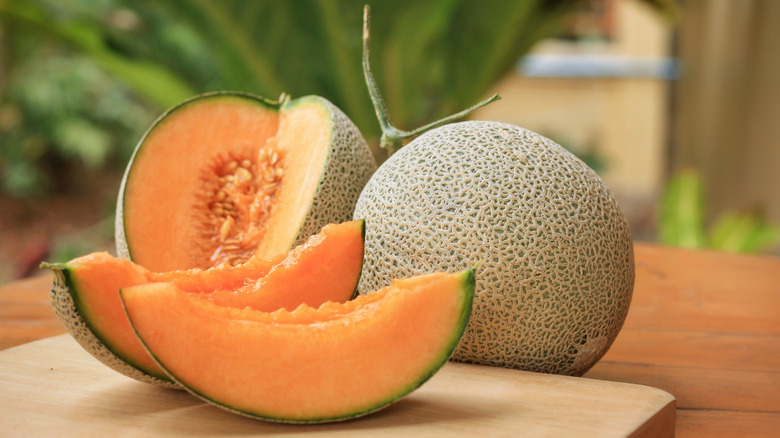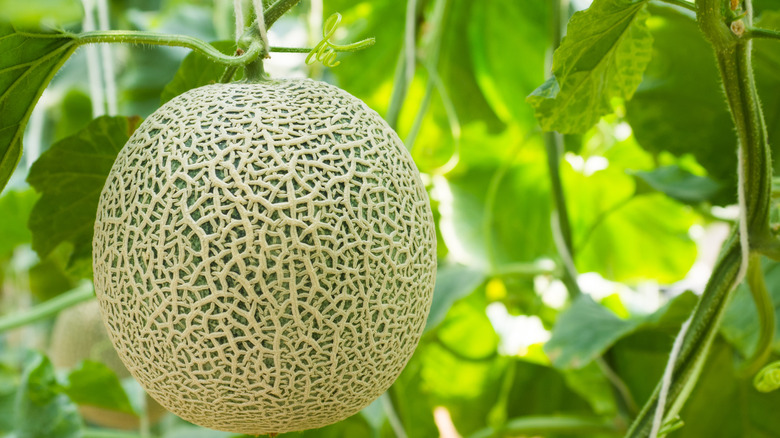Why You Should Always Check The Stem On A Cantaloupe
When you think of summer, watermelon is often the melon that comes to mind. But don't sleep on cantaloupe, a slice of this melon can be just as refreshing in the heat. You can enjoy it in many ways including with a sprinkle of everything-bagel spice or in a cocktail cooler or pair it with prosciutto on a pizza. However you choose to enjoy it, summer is the peak season for cantaloupe, which is also called muskmelon and rockmelon (via the Wisconsin Department of Public Instruction). Although it likely originated in the Middle East or India, it is named after Cantalupo, Italy, where the melon has been growing since the 1700s.
Cantaloupe also provides many nutritional benefits. Per Real Simple, the melon is chock full of fiber, vitamin C, and beta-carotene. Because it's almost 90% water, it can also help you keep hydrated during the summer heat. But before you can enjoy those benefits, you want to make sure you pick a perfectly ripe cantaloupe.
No stems attatched
Unlike a banana, a cantaloupe won't continue to ripen out on your countertop, according to the Wisconsin Department of Public Instruction. Once it is cut from the vine, the melon stops the ripening process. So it's important to know what to look for when choosing a cantaloupe at the grocery store or farmer's market.
While you might think of smelling the cantaloupe to check for ripeness, Delishably explains that checking the melon's stem is also important. If any of the stem is still attached to the melon, that is not a good sign as a melon will naturally separate when it is ripe. So when you are looking at the stem end of the cantaloupe, it will be indented, smooth, and round if it is ripe. Next time you're in the produce aisle, don't overlook the cantaloupe, but don't forget to check the stem. No one wants an unripe and flavorless cantaloupe.

